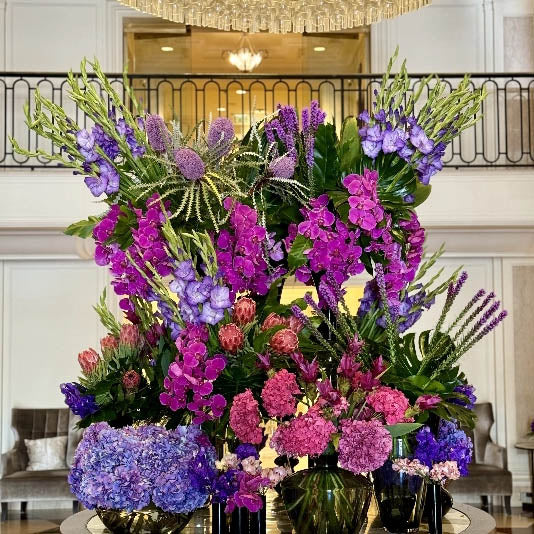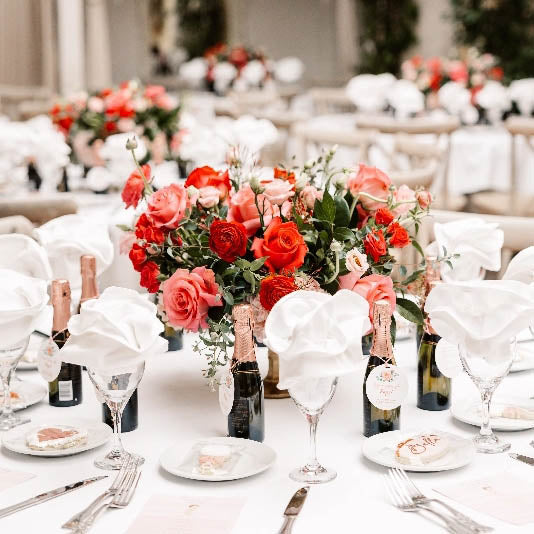
Flowers in Folklore and Mythology: Blooms of Legend and Lore
As jack-o'-lanterns flicker and shadows lengthen, let us delve into the mysterious realm where flowers intertwine with folklore and mythology. Throughout history, cultures across the globe have woven intricate stories around these delicate blooms, imbuing them with powers both benevolent and sinister. Join us on a journey through time and space as we explore the dark and enchanting world of flowers in legend and lore, where moonlit petals and shadowy stems whisper tales of the supernatural.
The Narcissus: A Tale of Deadly Beauty
In Greek mythology, the narcissus flower emerged from a tale of vanity and doom. The story tells of a beautiful young man named Narcissus who fell in love with his reflection and ultimately drowned as he tried to embrace it. From the spot where he died, the narcissus flower bloomed, its nodding head forever gazing at its own reflection in still waters.
The narcissus, born from death, serves as a chilling reminder that beauty can be a fatal attraction. Its dual nature – alluring yet deadly – makes it a fitting bloom for the Halloween season, reminding us that appearances can be deceiving in the most tragic ways.
Chrysanthemum: The Flower of Life and Death
As these autumnal blooms wave in the chill October wind, they whisper secrets of the great beyond. The chrysanthemum holds a complex place in folklore, particularly in East Asian cultures:
- In Japan, the chrysanthemum is the symbol of the Emperor and the Imperial family. However, it's also strongly associated with death and funerals, making it a flower of both royalty and the afterlife.
- Chinese tradition sees the chrysanthemum as a symbol of longevity and endurance. Legend has it that drinking chrysanthemum-steeped wine on the ninth day of the ninth lunar month can prolong life – or perhaps, on a moonless Halloween night, open one's eyes to the spirit world.
This dichotomy between life and death, celebration and mourning, showcases the chrysanthemum's unique position in global flower lore – a fitting reminder of the balance between light and dark as we approach the time when the veil between worlds is thinnest.
Lilies: Purity and the Underworld
Lilies, with their pallid petals, stand as sentinels between our world and the realm of spirits. These elegant blooms have a rich mythological history that spans cultures:
- In Greek mythology, lilies were associated with Hera, the queen of the gods. Legend says that lilies sprang from drops of her milk as she nursed Heracles.
- Ancient Egyptian mythology linked lilies to Osiris, god of the dead, rebirth, and transition. The flower was seen as a symbol of resurrection, its petals opening like the gates to the underworld.
- Celtic folklore saw the lily as a flower of the faerie realm, capable of opening locks and breaking evil enchantments. On Halloween night, it's said that lilies can guide lost souls back to the world of the living.
The lily's association with both purity and the underworld makes it a complex symbol, perfect for contemplation during the Halloween season when the boundaries between worlds blur and the innocent and the sinister dance together in the autumn mist.
Poppies: Sleep, Death, and Remembrance
Blood-red poppies nod their heads in fields and gardens, luring the unwary into eternal slumber. Few flowers have as rich folklore as the poppy, its crimson petals inspiring tales across cultures:
- In Greek mythology, poppies were associated with Hypnos, the god of sleep, and his twin brother Thanatos, the god of death. The poppy's sedative effects likely influenced this connection, leading to tales of entire armies being led astray by fields of these entrancing flowers.
- Roman legend tells that poppies grew on the graves of fallen soldiers, blooming from their shed blood. On dark autumn nights, it's said the ghosts of these warriors can be seen walking among the swaying poppies.
The poppy's deep connections to sleep, death, and remembrance make it a poignant flower for Halloween reflections on those who have passed beyond the veil. Its presence in bouquets and wreaths serves as a haunting reminder of the thin line between slumber and eternal rest.
Marigolds: Guiding the Dead
As twilight falls on All Hallows' Eve, these fiery blooms blaze a trail for wandering souls, their petals forming a bridge between life and death. Marigolds play a crucial role in Día de los Muertos (Day of the Dead) celebrations, which coincide with Halloween:
- Aztec mythology associated marigolds with Mictlantecuhtli, the god of the underworld. The flower was believed to guide the spirits of the dead back to the world of the living during festivities.
- In Hindu tradition, marigolds are sacred flowers often used in religious ceremonies and to decorate altars; their bright colors are believed to attract benevolent spirits.
- Medieval European folklore suggested that placing marigolds under their pillows would induce prophetic dreams or visions. Some still practice this tradition on Halloween night, hoping for glimpses of the future or messages from beyond.
The marigold's bright color and strong scent are believed to attract and guide spirits, making it an ideal flower for Halloween and remembrance celebrations. Their presence in autumn gardens serves as a beacon for souls traversing the veil between worlds.
Deadly Nightshade: The Witch's Berry
In the witch's garden, deadly nightshade reigns supreme, its berries holding the power of vision and death. No discussion of flowers in folklore would be complete without mentioning this infamous plant:
- Also known as belladonna, this plant has long been associated with witchcraft and dark magic in European folklore. Its very name whispers of midnight rituals and arcane knowledge.
- Renaissance-era legends tell of witches using nightshade to induce hallucinogenic states for their "flight" to sabbaths. On Halloween, it's said that the plant's power reaches its peak, offering visions of other realms to those brave (or foolish) enough to seek them.
- In Roman mythology, it was said that Atropos, one of the three Fates who decided human destinies, would cut the thread of life with a tool poisoned by nightshade.
While not a flower to be trifled with due to its extreme toxicity, the deadly nightshade's place in folklore reminds us of the power and potential danger found in the plant kingdom. Its presence in tales of witchcraft and fate makes it a quintessential Halloween bloom.
The Ghost Orchid: Phantom of the Swamps
Deep in the misty swamps of Florida, a spectral bloom sways in the moonlight. The ghost orchid, with its ethereal white flowers that seem to float in mid-air, has captivated imaginations and spawned countless legends:
- Native American lore speaks of these flowers as the spirits of lost explorers, their ghostly forms eternally searching for a way home through the treacherous swamps.
- Some believe that the ghost orchids bloom more profusely on Halloween night, their otherworldly glow attracting wandering souls and offering glimpses into the spirit realm.
- Modern ghost hunters claim that areas with ghost orchids are more likely to experience paranormal activity, as if the flowers act as conduits between our world and the next.
The ghost orchid's rarity and ethereal beauty make it a perfect symbol of the mysterious and the unseen, embodying the essence of Halloween's spectral visitors.
The Eternal Bloom of Legend
As the nights grow longer and the veil between worlds thins, let the flowers guide you through the rich landscape of myth and legend. Every petal carries millennia of human imagination and belief, whispering tales of gods and monsters, love and tragedy, life and the great beyond.
As you celebrate amidst flickering candles and rustling leaves this Halloween season, remember that each flower in your autumn bouquet carries centuries of spectral tales and otherworldly lore. Whether it's the narcissus's cautionary tale of vanity, the chrysanthemum's dance between life and death, or the marigold's role as a beacon for wandering spirits, these blooms connect us to the ancient rhythms of the season.
At The Hidden Garden, we understand the power of these floral stories. Our arrangements don't just beautify spaces; they tell tales as old as time and open doorways to the imagination. Whether you're looking to invoke the protective power of marigolds, the regal mystery of chrysanthemums, or the ethereal beauty of lilies, we're here to help you weave these ancient narratives into your modern Halloween celebrations.
As you gather with loved ones this All Hallows' Eve, take a moment to appreciate the secret language of flowers around you. In their delicate petals and rich symbolism, you might just catch a whisper from the other side – a reminder of the endless cycle of life, death, and rebirth that Halloween so poignantly celebrates.







